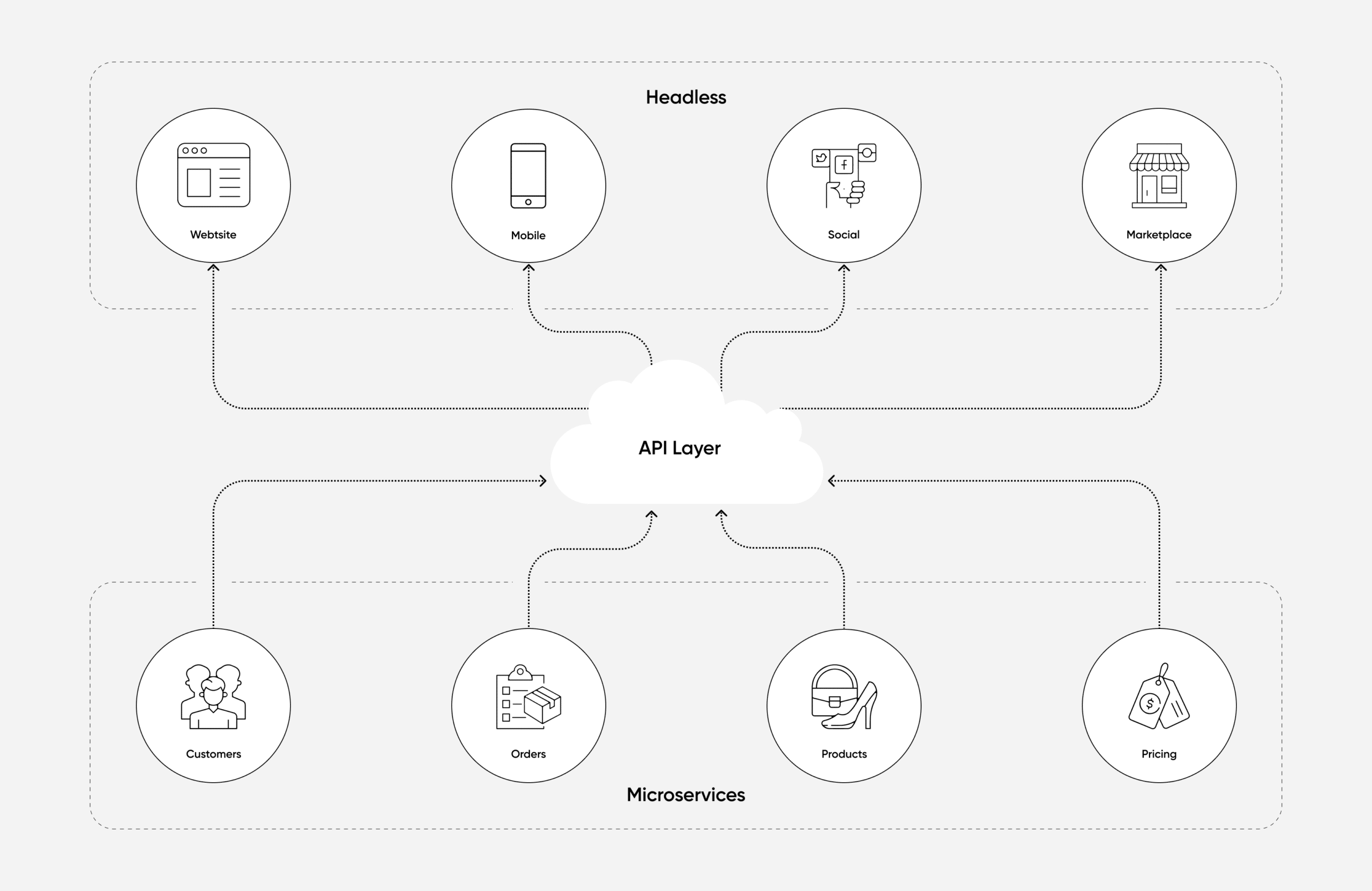In the rapidly evolving world of E-Commerce, businesses are constantly seeking ways to stay competitive, deliver exceptional user experiences, and adapt quickly to changing market demands. Traditional monolithic architectures often fall short in meeting these requirements, leading to slower innovation, limited scalability, and increased maintenance costs. Enter MACH architecture – an innovative approach revolutionizing E-Commerce development.
MACH, an acronym for Microservices, API-first, Cloud-native, and Headless, represents a paradigm shift in the way E-Commerce platforms are built and operated. Let’s delve into each component of MACH and explore how it empowers businesses in the digital realm.
Microservices: At the heart of MACH lies a microservices architecture, where applications are divided into smaller, loosely coupled services that can be developed, deployed, and scaled independently. Each microservice focuses on a specific business capability, such as product catalog, shopping cart, or payment processing. This modular approach enables agility, as individual services can be updated or replaced without impacting the entire system. It allows businesses to respond swiftly to market changes and introduce new features or integrations with ease.
API-first: APIs (Application Programming Interfaces) serve as the building blocks of MACH architecture. By adopting an API-first approach, E-Commerce platforms expose their core functionalities as APIs, enabling seamless integration with external systems, third-party services, and even different front-end experiences. This flexibility empowers businesses to leverage best-of-breed solutions, mix and match services, and create personalized customer journeys across various touchpoints, such as web, mobile, or voice interfaces.
Cloud-native: MACH architecture embraces the cloud-native philosophy, leveraging the scalability, reliability, and elasticity of cloud computing. By running on cloud infrastructure, E-Commerce platforms can dynamically scale resources based on demand, ensuring optimal performance during peak traffic periods. Additionally, cloud-native technologies, such as containers and serverless computing, enable efficient deployment, auto-scaling, and fault tolerance, reducing operational complexities and costs.
Headless: The headless approach in MACH architecture decouples the front-end presentation layer from the back-end commerce functionality. This separation allows businesses to select the most suitable front-end technologies and frameworks for delivering immersive user experiences. Whether it’s a progressive web app (PWA), a native mobile app, or even an augmented reality (AR) interface, the headless approach provides the flexibility to create compelling customer interactions while maintaining seamless integration with the commerce backend.
The MACH architecture empowers E-Commerce businesses to adapt, innovate, and scale at a pace demanded by today’s digital landscape. By embracing microservices, API-first design, cloud-native infrastructure, and headless architecture, organizations can unlock agility, streamline development cycles, and deliver exceptional user experiences across multiple channels.
The Mulesoft Advantage:
As businesses adopt the MACH architecture to achieve agility and innovation, the role of integration becomes pivotal. Mulesoft for example, a robust integration platform, seamlessly aligns with the principles of MACH, providing a powerful solution for connecting applications, data, and devices.
1.Unified Connectivity
Mulesoft acts as a unifying force, connecting the diverse components of a MACH-based E-Commerce system. By orchestrating seamless interactions between microservices and facilitating API-first development, Mulesoft ensures a unified and efficient operational environment.
2.API Management
In the API-first world of MACH, Mulesoft excels in API management, offering a comprehensive solution for designing, building, and managing APIs. This ensures that E-Cmmerce platforms can expose their functionalities securely and scale their API ecosystems efficiently.
3.Cloud Integration
Mulesoft’s cloud integration capabilities complement the cloud-native aspect of MACH architecture. Whether deploying on public, private, or hybrid clouds, Mulesoft enables businesses to harness the full potential of cloud scalability, resilience, and adaptability.
4.Headless Commerce Integration
For E-Commerce platforms embracing the headless approach, Mulesoft facilitates the integration of diverse front-end experiences. This enables businesses to craft engaging and personalized customer journeys across various touchpoints without compromising back-end functionality.


